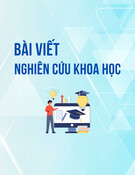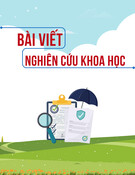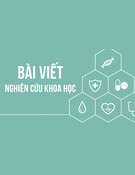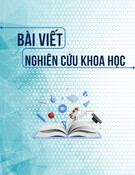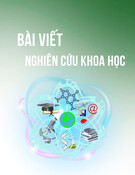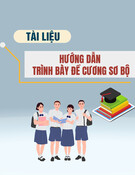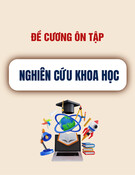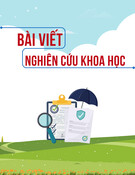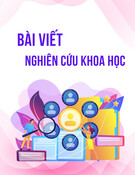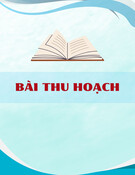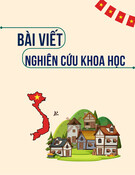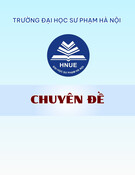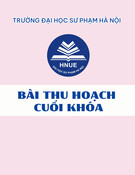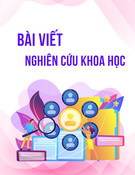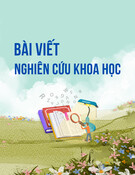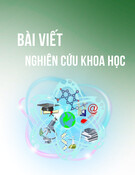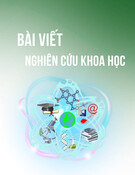
T
ẠP CHÍ KHOA HỌC
TRƯ
ỜNG ĐẠI HỌC SƯ PHẠM TP HỒ CHÍ MINH
Tập 21, Số 9 (2024): 1623-1636
HO CHI MINH CITY UNIVERSITY OF EDUCATION
JOURNAL OF SCIENCE
Vol. 21, No. 9 (2024): 1623-1636
ISSN:
2734-9918
Websit
e: https://journal.hcmue.edu.vn https://doi.org/10.54607/hcmue.js.21.9.4118(2024)
1623
Research Article1
BUILDING A DOCUMENT READING ASSISTANT
FOR THE VISUALLY IMPAIRED
Thai Thi Kim Yen*, Nguyen Thi Thu Ha, Vo Thi Que Tran,
Huynh Ngo My Vy, Tran Hoang Yen Nhi, Ngo Quoc Viet
Ho Chi Minh City University of Education, Vietnam
*Corresponding author: Thai Thi Kim Yen – Email: 4701104250@student.hcmue.edu.vn
Received: January 28, 2024; Revised: June 13, 2024; Accepted: June 26, 2024
ABSTRACT
This study introduces a solution that applies document analysis and recognition technologies
to enhance document accessibility for individuals with visual impairments. The objective is to
develop an algorithm capable of accurately analysing the content of document components and
converting them into voice format. Leveraging the pre-trained YOLOv8 model for document analysis
and optical character recognition technology, the image annotation model uses the AIAnytime API
and Pix2Tex technology to extract LaTeX code from images, facilitating the conversion of
mathematical formulas into spoken words. The research results demonstrate significant progress in
effectively supporting document reading, making a meaningful contribution to assistive technology
for the visually impaired.
Keywords: document analysis and recognition; document image processing; visual
impairments
1. Introduction
The term "visually impaired" describes a condition that cannot be corrected by
medication or surgery. It includes individuals with partially impaired vision as well as those
who are completely blind. Visually impaired individuals face numerous challenges in
acquiring information visually, particularly when reading books. Initially, a visually
impaired person desiring to read a book has no alternative but to rely on someone else to
read it aloud. With the progress of humanity, numerous studies have been conducted to
normalise the act of reading for individuals with visual impairments. As a result, various
innovations and solutions have emerged, including braille books and audiobooks.
The Braille system provides an effective solution for visually impaired individuals
when reading books or documents. However, it faces limitations such as slow reading speed
Cite this article as: Thai Thi Kim Yen, Nguyen Thi Thu Ha, Vo Thi Que Tran, Huynh Ngo My Vy, Tran Hoang
Yen Nhi, & Ngo Quoc Viet (2024). Building a document reading assistant for the visually impaired. Ho Chi Minh
City University of Education Journal of Science, 21(9), 1623-1636.





